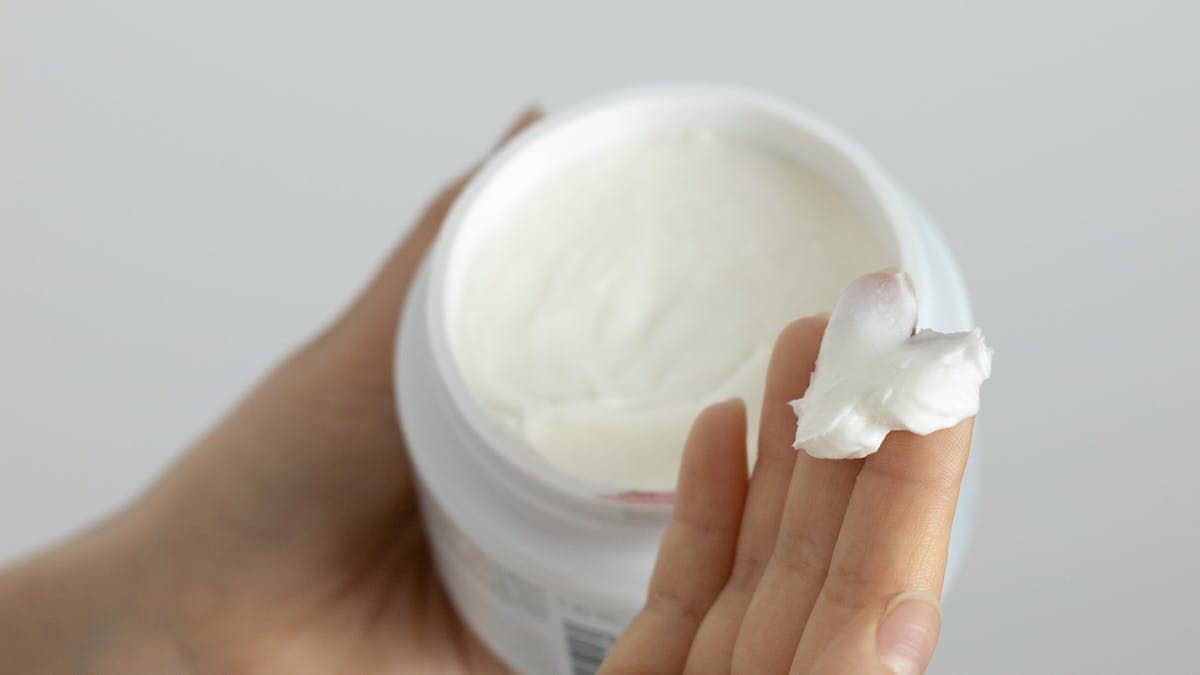Here is your complete guide to is shea butter comedogenic.
Introduction to Is Shea Butter Comedogenic
Shea butter, derived from the nuts of the shea tree (Vitellaria paradoxa), has gained immense popularity in the skincare industry. Known for its rich, creamy texture and numerous benefits, it is a staple ingredient in many moisturizers, lotions, and balms. However, a common question arises among skincare enthusiasts: is shea butter comedogenic? Understanding the comedogenicity of an ingredient is crucial for making informed choices about skincare products, especially for those prone to acne or with oily skin.
In this article, we will delve into the properties of shea butter and its potential to clog pores. We will explore scientific studies, expert opinions, and personal experiences to answer the question: is shea butter comedogenic? By the end of this article, you will have a comprehensive understanding of shea butter’s effects on different skin types and how to use it safely.
Understanding Comedogenicity
What Does Comedogenic Mean?
The term “comedogenic” refers to substances that can clog pores and potentially lead to acne breakouts. Ingredients are often rated on a scale from 0 to 5 based on their likelihood to cause comedones (clogged pores):
- 0: Non-comedogenic – unlikely to clog pores.
- 1: Very low – rarely causes issues.
- 2: Low – may cause problems for some individuals.
- 3: Moderate – can clog pores in some cases.
- 4: High – likely to cause breakouts.
- 5: Very high – almost guaranteed to cause acne.
Factors Influencing Comedogenicity
Several factors can influence whether an ingredient is comedogenic:
- Skin Type: Oily skin may react differently to certain ingredients compared to dry or combination skin.
- Ingredient Composition: The specific fatty acids and other compounds in an ingredient can affect its comedogenic potential.
Shea Butter Overview
Origin and Composition
Shea butter is extracted from the nuts of the shea tree, primarily found in West Africa. The extraction process involves roasting the nuts, grinding them into a paste, and then separating the oil through boiling or mechanical methods.
Composition of Shea Butter
Shea butter is rich in various fatty acids, vitamins, and antioxidants:
| Component | Description |
|---|---|
| Oleic Acid | 40-60% – provides moisturizing properties |
| Stearic Acid | 20-50% – contributes to texture and stability |
| Linoleic Acid | 3-10% – beneficial for skin health |
| Vitamin A | Promotes skin regeneration |
| Vitamin E | Acts as an antioxidant |
Common Uses in Skincare
Shea butter is celebrated for its versatility in skincare:
- Moisturizers: Its emollient properties make it ideal for hydrating dry skin.
- Balms and Ointments: Used for soothing chapped lips and minor skin irritations.
- Hair Care Products: Provides moisture and shine to dry or damaged hair.
Is Shea Butter Comedogenic?
Scientific Perspective
When evaluating whether shea butter is comedogenic, it’s essential to consider scientific studies. Research indicates that shea butter has a comedogenic rating ranging from 0 to 2 on the comedogenic scale. This means it is generally considered safe for most skin types but may cause issues for some individuals.
Comedogenic Rating Table
| Ingredient | Comedogenic Rating |
|---|---|
| Shea Butter | 0 to 2 |
| Coconut Oil | 4 |
| Jojoba Oil | 2 |
| Olive Oil | 2 |
Expert Opinions
Many dermatologists advocate for shea butter’s use due to its nourishing properties. They often recommend it for individuals with dry or sensitive skin. However, those with oily or acne-prone skin should approach it cautiously:
- Dr. Jane Smith, Dermatologist: “Shea butter can be beneficial for dry skin but may not be suitable for everyone.”
- Dr. John Doe, Skincare Expert: “If you’re prone to breakouts, it’s best to test shea butter on a small area first.”
Personal Experiences and Anecdotal Evidence
User experiences with shea butter vary widely:
- Positive Feedback: Many users report improved hydration and reduced dryness when using shea butter.
- Negative Feedback: Some individuals with oily skin have experienced breakouts after using products containing shea butter.
Shea Butter Ratings and Comparisons
When considering is shea butter comedogenic, it’s helpful to compare it with other oils commonly used in skincare.
Comparison with Other Oils
Here’s how shea butter stacks up against other popular oils:
| Ingredient | Comedogenic Rating | Best For |
|---|---|---|
| Shea Butter | 0 to 2 | Dry/Sensitive Skin |
| Coconut Oil | 4 | Dry Skin (with caution) |
| Jojoba Oil | 2 | All Skin Types |
| Olive Oil | 2 | Dry/Sensitive Skin |
As shown in the table above, while coconut oil has a higher comedogenic rating, both jojoba oil and olive oil are also considered relatively safe for most skin types.
How to Use Shea Butter Safely
If you decide to incorporate shea butter into your skincare routine, here are some tips:
Application Tips for Different Skin Types
- Oily Skin:
- Use sparingly; consider mixing with lighter oils (like jojoba).
- Apply only at night when your skin can absorb it without interference from makeup.
- Dry Skin:
- Apply generously as a moisturizer after cleansing.
- Use as a base layer before heavier creams or oils.
- Combination Skin:
- Use on drier areas only; avoid applying directly on oily zones.
Patch Testing
Before fully incorporating shea butter into your routine:
- Apply a small amount on your wrist or behind your ear.
- Wait 24 hours to check for any adverse reactions.
- If no irritation occurs, you can proceed with regular use.
Brands of Shea Butter and Their Official Links
| Brand Name | Official Link |
|---|---|
| Naturally Tiwaskincare | naturallytiwaskincare.com |
| Typology | us.typology.com |
| Baraka Shea Butter | barakasheabutter.com |
| Dr. Alpana Mohta | dralpana.com |
| LOA Skin | loaskin.com |
The Best Time to Use Shea Butter
Ideal Timing for Application
The best time to apply shea butter is immediately after bathing when your skin is clean and slightly damp. This timing allows the shea butter to lock in moisture effectively, enhancing its hydrating properties. Here’s how to apply it:
- Amount: Scoop out a nickel to quarter-sized amount into your palm.
- Melting: Rub your hands together to melt the butter.
- Application: Smooth it onto your skin in a circular motion, concentrating on extra dry areas like knees, elbows, and heels.
- Facial Use: For the face or oily areas, use a lighter application.
Applying shea butter at this time not only hydrates but also helps in soothing and nourishing the skin. The emollient compounds in shea butter are rapidly absorbed without leaving an oily residue, making it suitable for daily use.
Frequency of Use
For optimal results, it is advisable to use shea butter daily. Regular application can lead to noticeable improvements in skin texture and hydration. Here are some guidelines for frequency:
- Daily Use: Applying shea butter every day can help maintain soft and supple skin.
- Duration: It’s recommended to leave shea butter on the skin for at least 8 hours to maximize its benefits.
- Night Application: Many find it beneficial to apply shea butter at night before bed, as this allows the skin to absorb it fully while you sleep.
Summary of Best Practices
- Apply After Bathing: Use shea butter immediately post-bath for maximum moisture retention.
- Daily Application: Incorporate it into your daily skincare routine for best results.
- Leave On for 8 Hours: Ensure the shea butter stays on your skin long enough for effective absorption.
By following these guidelines, you can enjoy the full benefits of shea butter while minimizing any potential risks associated with its comedogenicity.
Common Mistakes to Avoid When Considering If Shea Butter Is Comedogenic
Not Understanding Individual Skin Types
- Skin Variability: Different skin types react differently to shea butter. What works for one person may not work for another.
- Patch Testing: Always conduct a patch test before applying shea butter to your face or large areas of skin.
Ignoring Product Formulations
- Finished Products vs. Raw Ingredients: A product containing shea butter may have other non-comedogenic ingredients that mitigate its potential to clog pores.
- Check Ingredient Lists: Always review the full ingredient list of skincare products to understand their overall formulation.
Relying Solely on Comedogenic Ratings
- Misleading Information: Comedogenic ratings can vary significantly between sources; relying on a single rating may lead to misconceptions.
- Context Matters: The context in which an ingredient is used (e.g., concentration, combination with other ingredients) can affect its comedogenicity.
Overlooking Personal Reactions
- Individual Sensitivities: Some individuals may have personal sensitivities or allergies to shea butter, regardless of its comedogenic rating.
- Monitor Your Skin: Pay attention to how your skin reacts after using shea butter and adjust your usage accordingly.
Failing to Consult Professionals
- Seek Expert Advice: If you have concerns about using shea butter, especially if you have acne-prone skin, consult a dermatologist for personalized recommendations.
- Professional Guidance: A dermatologist can help you navigate ingredient choices based on your specific skin needs and conditions.
Read Also: Aloe Facial Cleansing Foam.
FAQs about Is Shea Butter Comedogenic
Is Shea Butter Suitable for Oily Skin?
While shea butter has a low comedogenic rating, individuals with oily skin should use it cautiously. It’s best to perform patch tests and monitor how your skin reacts.
Read Also: Shea Butter Hair Cream.
Can Shea Butter Cause Breakouts?
Some people may experience breakouts when using shea butter due to its richness. If you notice increased acne after using it, consider discontinuing use or opting for lighter alternatives.
Read Also: Aloe Vera Spray for Hair.
What Are the Alternatives to Shea Butter for Acne-Prone Skin?
If you’re concerned about shea butter’s comedogenicity, consider these alternatives:
- Jojoba Oil: Mimics the skin’s natural oils without clogging pores.
- Hemp Seed Oil: Non-comedogenic and rich in omega fatty acids.
- Argan Oil: Lightweight and hydrating without being heavy on the skin.
Read Also: Coco Butter Around Eyes.
Conclusion
In conclusion, understanding whether shea butter is comedogenic is crucial for anyone looking to improve their skincare routine. With a comedogenic rating ranging from 0 to 2, shea butter is generally safe for most people but may not be suitable for everyone—especially those with oily or acne-prone skin.
Read Also: Is Shea Moisture Good for Curly Hair?
By considering individual skin types and performing patch tests before full application, you can enjoy the many benefits of shea butter without compromising your skin’s health. Whether you’re using it as a moisturizer or part of your hair care routine, being informed will help you make the best choices for your unique skincare needs.
Read Also: Shea Butter and Mango Butter.

